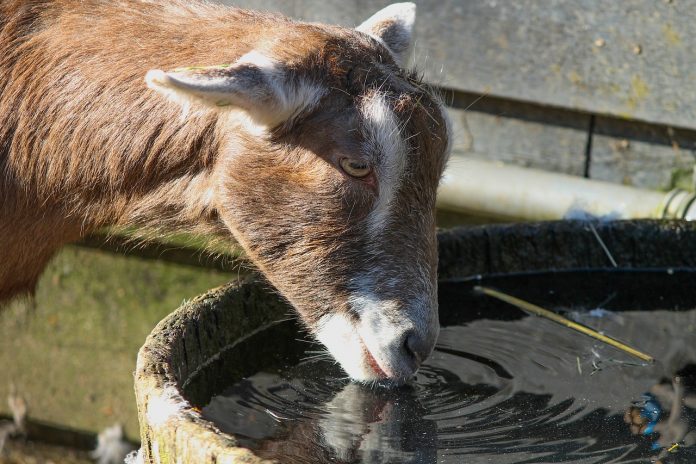We have all been really concerned with the effects that the unpredictable weather has had on forage production this year.
First, we had so much rain and even flooding that delayed forage growth and quality haymaking. Now we are experiencing areas of semi-drought conditions in some areas.
We all have had places in our counties that it rained 3 inches in one area and three miles down the road, or less as the crow flies, they may only have received a half an inch.
Dangerous algae
Now in the last week, we have heard in the news about family pets (dogs) dying after swimming in ponds and small lakes containing growths of blue-green algae, while all animals are at risk of poisoning.
When it comes to grazing livestock, sheep and goats are more likely to be affected than cattle because they drink from the water edges, while cattle will often wade out into the water and beyond the toxic area to drink.
But algae is not the only concern that we need to think about. Not only have streams flooded, but some ponds have run over their dams and filled with contaminants and debris, making them less desirable for drinking.
Water consumption
So let’s discuss water and the importance of water quality when grazing.
Water is the most important and essential nutrient for livestock production.
Unfortunately, water is often the most overlooked nutrient. Animals need a clean, fresh, safe supply of water for normal processes, such as the regulation of body temperature, growth, digestion, metabolism, reproduction and excretion.
Many factors influence the amounts of water required, including gestation, lactation, types of diet, activity, environmental temperature and feed intake.
Water consumption varies depending on the animal. A beef cow may only consume 8 gallons of water a day in 50-degree weather and consume 20 gallons on a 90-degree day.
While a dairy cow in lactation may consume 30 gallons of water on that same 90-degree day.
Sheep and goats, on the other hand, consume on average 1.5 to 3.5 gallons of water a day.
Contaminants
The most common water quality problems affecting livestock production are:
- High levels of minerals;
- High levels of nitrates or nitrites;
- Bacterial contamination;
- Growths of blue-green algae;
- Pesticides and fertilizers
These contaminants can contribute to poor water quality and reduce water intake, which may lead to a reduction in feed intake and a loss of production.
So now is the time to evaluate your water supply and livestock production. Are your calves growing and gaining like they should?
Your farm may have plenty of good quality forage out there, but your water supply may be holding their performances back.
Switching those cows to a pasture with a better water supply can help.
Remember: Water that is good quality will increase water and feed consumption, which will positively affect livestock performance and production.














I appreciated your saying that a beef cow will consume different amounts of water depending on the weather. The weather is usually fair on the farm so animals will likely not consume as much. But having a well drilled up to have an abundant supply of water for the farm animals isn’t a bad thing.